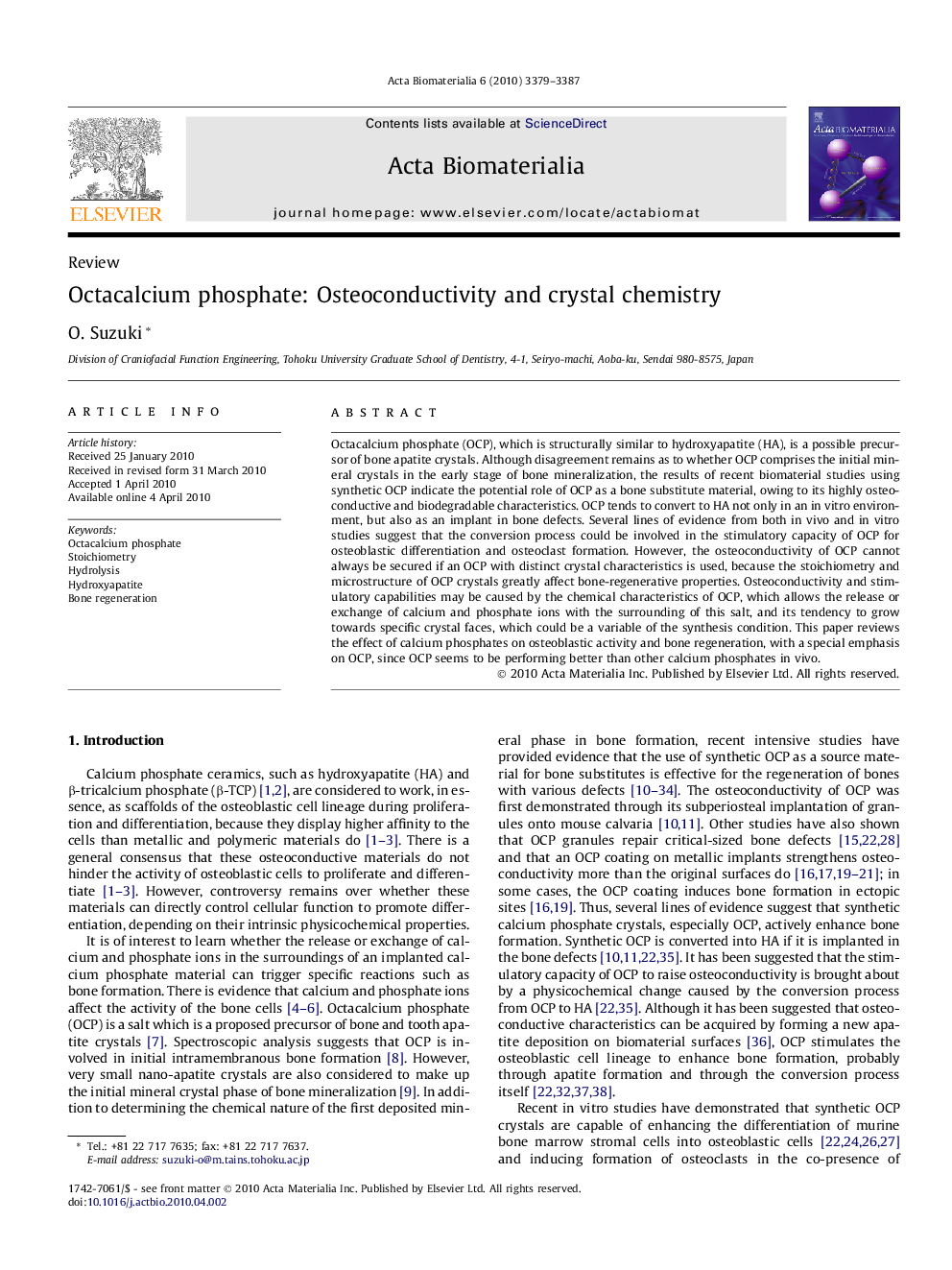| Article ID | Journal | Published Year | Pages | File Type |
|---|---|---|---|---|
| 2131 | Acta Biomaterialia | 2010 | 9 Pages |
Octacalcium phosphate (OCP), which is structurally similar to hydroxyapatite (HA), is a possible precursor of bone apatite crystals. Although disagreement remains as to whether OCP comprises the initial mineral crystals in the early stage of bone mineralization, the results of recent biomaterial studies using synthetic OCP indicate the potential role of OCP as a bone substitute material, owing to its highly osteoconductive and biodegradable characteristics. OCP tends to convert to HA not only in an in vitro environment, but also as an implant in bone defects. Several lines of evidence from both in vivo and in vitro studies suggest that the conversion process could be involved in the stimulatory capacity of OCP for osteoblastic differentiation and osteoclast formation. However, the osteoconductivity of OCP cannot always be secured if an OCP with distinct crystal characteristics is used, because the stoichiometry and microstructure of OCP crystals greatly affect bone-regenerative properties. Osteoconductivity and stimulatory capabilities may be caused by the chemical characteristics of OCP, which allows the release or exchange of calcium and phosphate ions with the surrounding of this salt, and its tendency to grow towards specific crystal faces, which could be a variable of the synthesis condition. This paper reviews the effect of calcium phosphates on osteoblastic activity and bone regeneration, with a special emphasis on OCP, since OCP seems to be performing better than other calcium phosphates in vivo.
